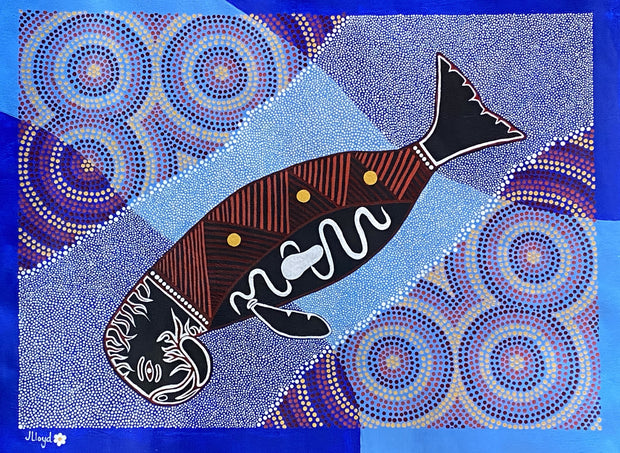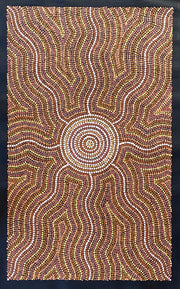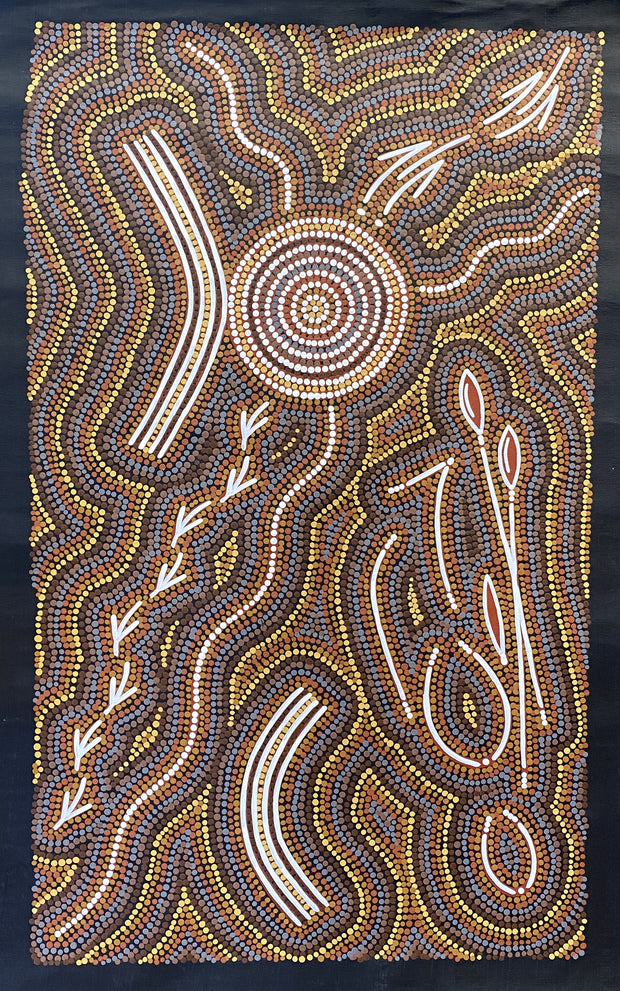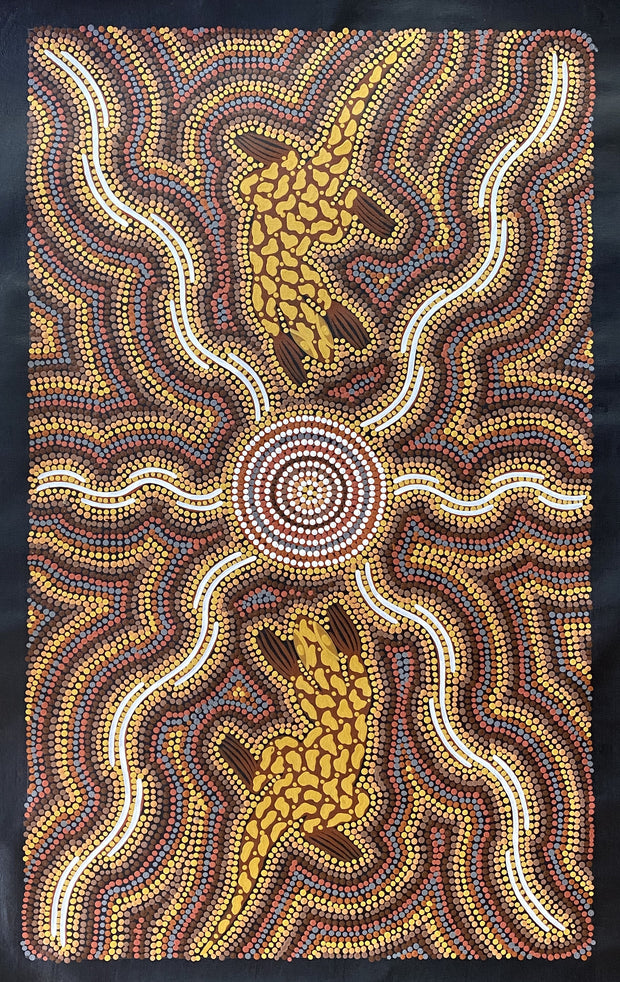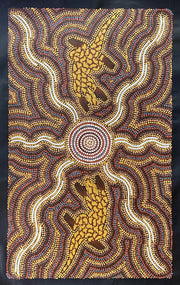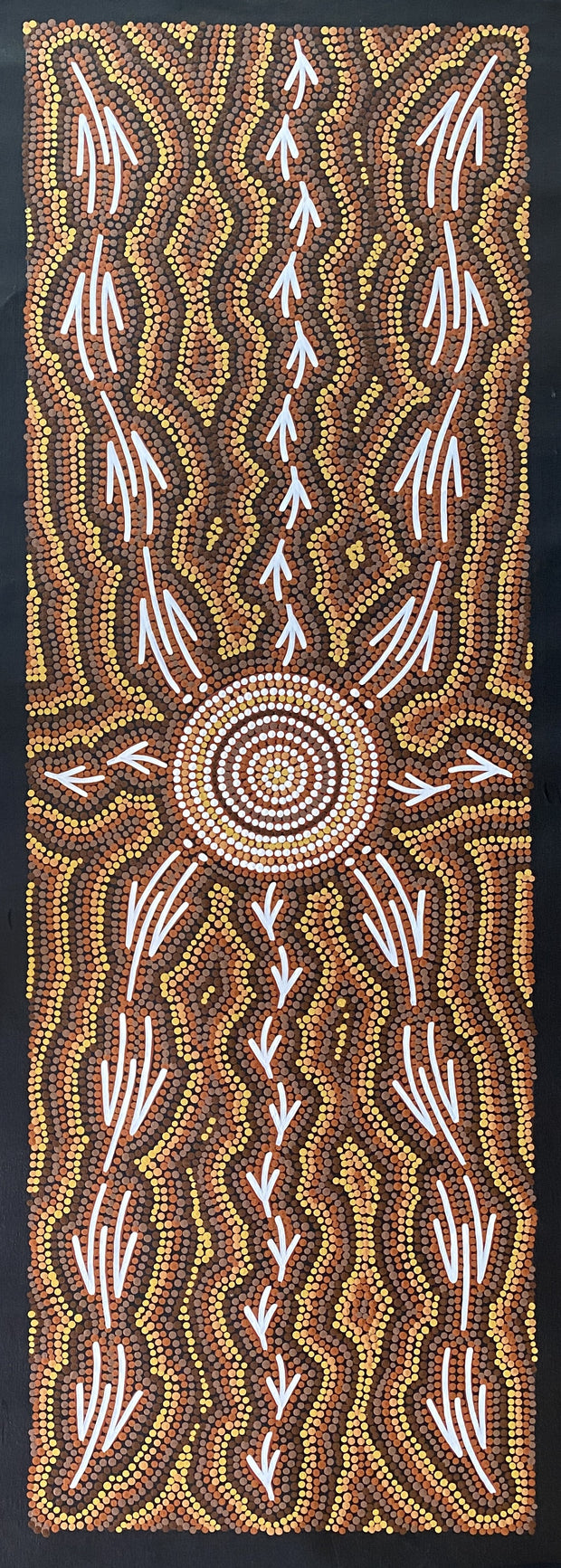

Wanakiji Jukurrpa (Bush Tomato Dreaming) by Debbie Napaljarri Brown
- Artist: Debbie Napaljarri Brown
- Title: Wanakiji Jukurrpa (Bush Tomato Dreaming)
- Size: 61 x 30 cm
Biography
Debbie Napaljarri Brown was born in Nyirripi, a remote Aboriginal community 400 km north-west of Alice Springs in the Northern Territory of Australia. She grew up in Nyirrpi, and did most of her schooling there, although she spent several years boarding at Yirrara College in Alice Springs. When she returned to Nyirripi she worked at the store as well as helping to care for old people. In 2010 Debbie moved to Yuendumu, 160 km east of Nyirripi, with her husband and son Jarvis to be closer to her husband’s family. She works for the Women’s Centre, cooking lunches for the kids at school. Debbie has been painting with Warlukurlangu Artists Aboriginal Corporation, an Aboriginal owned and governed art centre located in Yuendumu, since 2006. Her Grandmother, Margaret Napangardi Brown, also an artist with the art centre, taught her to paint. Her Grandfather is the renowned Pintupi artist Pegleg Tjampitjinpa who was born c.1920 and grew up in the vicinity of Wilkinkarra, living a traditional life. Debbie would watch her grandmother and grandfather paint and listen to her Grandmother’s Jukurrpa or Dreaming stories. In her paintings, Debbie paints her father’s Jukurrpa, Dreamings which relate directly to her land, its features, plants and animals. These stories were passed down to her by her Grandmother and her mother and their parents before them for millennia.
Wanakiji Jukurrpa (Bush Tomato Dreaming)
The Wanakiji Jukurrpa (bush tomato [Solanum chippendalei] Dreaming) travels through Yaturlu (near Mount Theo, north of Yuendumu). “Wanakiji” grows in open spinifex country and is a small, prickly plant with purple flowers that bears green fleshy fruit with many small black seeds. After collecting the fruit the seeds are removed with a small wooden spoon called ‘kajalarra’. The fruit then can be eaten raw or threaded onto skewers called ‘turlturrpa’ and then cooked over a fire. ‘Wanakiji’ can also be skewered and left to dry. When they are prepared in this way it is called ‘turlturrpa’ and the fruit can be kept for a long time. In contemporary Warlpiri paintings traditional iconography is used to represent the Jukurrpa, particular sites and other elements. The Wanakiji Jukurrpa belongs to Napanangka/Napangardi women and Japanangka/Japangardi men.




